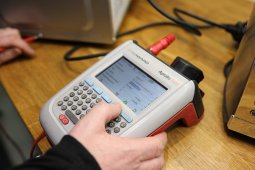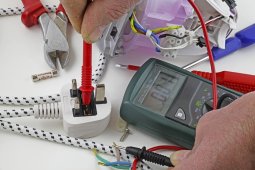
Ensuring workplace safety is every employer’s responsibility. In fact, the Health and Safety at Work Act 2015 requires employers to protect workers by eliminating or minimising risks at work.
Electrical testing and tagging is one way to ensure compliance with the Act. It is so cheap and fast that there is no excuse not to do it at the required frequency. You can even do it yourself if you are competent in doing the procedure.
To be considered as a ‘Competent Person’, you must be able to prove competency through training, knowledge or a combination of both. The best way to do this would be to attend a test and tag competency course where you’ll learn the knowledge and skills in using a Portable Appliance Tester (PAT testing) properly. Using a PAT is an easy way to ensure your tools, leads and appliances are compliant and tested for electrical integrity.
 Being competent in testing and tagging comes with a number of benefits:
Being competent in testing and tagging comes with a number of benefits:
- You save time in looking for a trustworthy and reliable contractor as you could simply train internal staff to carry out testing and tagging to the required standards.
- You save costs through self-compliance. Training is cheaper than hiring a sparkie every few months or so.
- In-house testing and tagging allows you to schedule the inspection at a time most suitable to production requirements, so it doesn’t impede productivity.
It’s a good idea to bring your own test and tag machine when undertaking a test and tag course. This way, you will understand its various features and have firsthand experience of its application.
What type of equipment must be tested and tagged?
New equipment only needs to be visually inspected and tagged. On the other hand, portable appliances that fall into either of the two categories need to be tested and tagged:
Class I – earthed appliances such as irons, kettles and toasters
Class II – double insulated appliances such as electric drills and hair dryers. These are usually identified with the label ‘Double Insulated’ or a symbol (a square within a square)
In short, all devices that have a removable plug, a flexible cable and a high voltage (not exceeding 50V) should be inspected. This includes cord sets, extension leads and portable RCD’s.
How often the appliance should be tested depends on the environment in which it is used. For example, in construction and mining industries where the nature of work is harsh, test and tag procedures must be done every 3 months and meet the appropriate standards.
Remember, electrical safety is your responsibility. It pays to have knowledge of electrical systems that you’re using in the workplace and the regulations that cover their use. Not taking the appropriate actions to provide a safe working environment may result in legal and financial consequences. So it’s always a good idea to be on the side of the law, rather than against it.
If you are interested in doing an electrical testing and tagging course, get in touch with our experts at MetroTest to book your spot.







